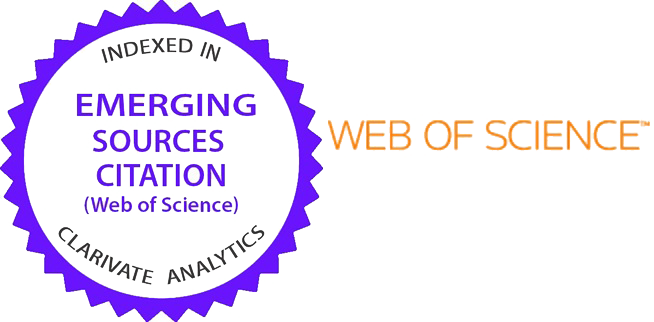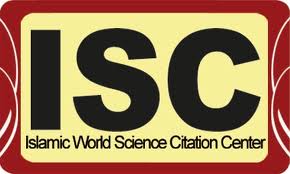Enhancement of the Photocatalytic Activity of MIL-53 Metal–Organic Frameworks Through the Addition of Reduced Graphene Oxide for Improved Degradation of Organic Dye Pollutants in Water Treatment Applications
DOI:
https://doi.org/10.31436/iiumej.v26i2.3556Keywords:
metal organic frameworks, Photocatalyst, reduced Graphite Oxide, Methylene blue dye, methylene orange dye, DegradationAbstract
A simple nanocomposite consisting of MIL-53(Al) and reduced graphene oxide (rGO), denoted as MIL-53(Al)/rGO, was synthesized as a photocatalyst driven by sunlight and UV light to study the decomposition of methylene orange and methylene blue in aqueous solution. The MIL-53(Al)/rGO ultrafine particles were produced by an in situ method using the solvothermal technique. The nanocomposite was made with two different amounts of rGO, 2.5% and 5% by weight. Various tests, including XRD, N2 adsorption-desorption isotherms, SEM, SEM-EDS, UV-Vis DRS (Diffuse Reflectance Spectroscopy), and FTIR, were performed on all photocatalyst variations to analyse their properties. Results from SEM and EDS showed the creation of small MIL-53(Al) particles measuring 10-20 ?m and rGO spread evenly on the MIL-53(Al) surface, particularly in the 2.5% rGO sample. The photocatalytic effectiveness of the MIL-53(Al)/rGO nanocomposites was tested for degrading organic dyes (MO and MB) in water under both sunlight and UV light for 60- and 120-minute durations. The 2.5% rGO photocatalyst showed the highest performance, removing over 96% and 98% of the dyes after one hour of sunlight exposure for MB and MO, respectively. This demonstrates that the combined effect of MIL-53(Al) and rGO composite can be seen as an effective photocatalyst for breaking down reactive dyes, such as MO and MB, in water treatment applications.
ABSTRAK: Kajian ini adalah berkaitan nanokomposit sederhana daripada MIL-53(Al) dan grafit oksida yang tereduksi (rGO), atau MIL-53(Al)/rGO, berjaya disintesis sebagai fotopemangkin oleh cahaya matahari dan cahaya UV bagi mengkaji penguraian metil jingga (MO) dan metilena biru (MB) dalam larutan akueus. Zarah ultrahalus MIL-53(Al)/rGO dihasilkan melalui kaedah in situ menggunakan teknik solvotermal. Nanokomposit dibuat dengan dua jumlah rGO berat berbeza, 2.5 wt% dan 5 wt%. Pelbagai ujian termasuk XRD, N2 penyerapan-nyahserapan isoterma (BET), SEM, SEM-EDS, UV-Vis DRS, dan FTIR telah dilakukan pada semua variasi fotopemangkin bagi mengkaji sifatnya. Dapatan kajian dari SEM dan EDS menunjukkan penciptaan zarah kecil MIL-53(Al) berukuran 10-20 ?m dan rGO tersebar secara rata pada permukaan MIL-53(Al), terutamanya dalam sampel rGO 2.5%. Keberkesanan fotopemangkin nanokomposit MIL-53(Al)/rGO telah diuji bagi mengurai pewarna organik dalam air, di bawah kedua-dua cahaya matahari dan cahaya UV selama tempoh 60 dan 120 minit. Fotopemangkin rGO 2.5% menunjukkan prestasi tertinggi, dengan penyingkiran lebih dari 96% MB dan 98% MO, selepas pendedahan cahaya matahari selama satu jam. Ini menunjukkan, kesan gabungan komposit MIL-53(Al) dan rGO, boleh dilihat sebagai fotopemangkin yang berkesan bagi memecahkan pewarna reaktif, seperti MO dan MB, dalam aplikasi rawatan air.
Downloads
Metrics
References
L. Liu, Z. Chen, J. Zhang, D. Shan, Y. Wu, L. Bai, B. Wang. Treatment of industrial dye wastewater and pharmaceutical residue wastewater by advanced oxidation processes and its combination with nanocatalysts: A review. J. Water Process Eng. 2021; 42(22): 102122. doi: 10.1016/j.jwpe.2021.102122.
S. Jorfi, S. Pourfadakari, and B. Kakavandi. A new approach in sono-photocatalytic degradation of recalcitrant textile wastewater using MgO@Zeolite nanostructure under UVA irradiation. Chem. Eng. J. 2018 Jul; 343: 95–107. doi: 10.1016/j.cej.2018.02.067.
M. S. Jami, M. Mel, A. R. M. Ariff, Q. M. Abdulazeez. Investigation of bioflocculant as dewatering aid in sludge treatment. IIUM Eng. J. 2018; 19(1): 15–23. doi: 10.31436/iiumej.v19i1.735.
J. Wang, S. Wang. Reactive species in advanced oxidation processes: Formation, identification and reaction mechanism. Chem. Eng. J.2020; 401:126158. doi: 10.1016/j.cej.2020.126158.
G. I. Lupu, C. Orbeci, L. Bobiric?, C. Bobiric?, L. F. Pascu. Key Principles of Advanced Oxidation Processes: A Systematic Analysis of Current and Future Perspectives of the Removal of Antibiotics from Wastewater. Catalysts. 2023; 13(9). doi: 10.3390/catal13091280.
S. A. Younis, E. E. Kwon, M. Qasim, K-H. Kim, T. Kim, D. K, X. Dou, I. Ali. Metal-organic framework as a photocatalyst: Progress in modulation strategies and environmental/energy applications. Progress in Energy and Combustion Science. 2020 Nov. 01;81. doi: 10.1016/j.pecs.2020.100870.
F. Zhang, X. Wang, H. Liu, C. Liu, Y. Wan, Y. Long, Z. Cai. Recent advances and applications of semiconductor photocatalytic technology. Appl. Sci. 2019; 9(12). doi: 10.3390/app9122489.
M. Nemiwal, V. Subbaramaiah, T. C. Zhang, D. Kumar. Recent advances in visible-light-driven carbon dioxide reduction by metal-organic frameworks. Sci. Total Environ. 2021; 762: 144101. doi: 10.1016/j.scitotenv.2020.144101.
Y. Chen, B. Y. Zhai, Y. N. Liang, Y. Li. Hybrid photocatalysts using semiconductor/MOF/graphene oxide for superior photodegradation of organic pollutants under visible light. Mater. Sci. Semicond. Process. 2020 Mar;107. doi: 10.1016/j.mssp.2019.104838.
M. A. Hassaan, M. A. El-Nemr, M. R. Elkatory, S. Ragab, V. C. Niculescu, A. El Nemr. Principles of Photocatalysts and Their Different Applications: A Review. 2023; 381(6). Springer International Publishing.
N. Mohammed, P. Palaniandy, F. Shaik, H. Mewada. Experimental and Computational Analysis for Optimization of Seawater Biodegradability Using Photo Catalysis. IIUM Eng. J. 2023;24(2):11–33. doi: 10.31436/iiumej.v24i2.2650.
N. Sun, X. Si, L. He, J. Zhang, Y. Sun. Strategies for enhancing the photocatalytic activity of semiconductors. Int. J. Hydrogen Energy. 2024 Mar; 58: 1249–1265. doi: 10.1016/J.IJHYDENE.2024.01.319.
C. B. Anucha, I. Altin, E. Bacaksiz, V. N. Stathopoulos. Titanium dioxide (TiO?)-based photocatalyst materials activity enhancement for contaminants of emerging concern (CECs) degradation: In the light of modification strategies. Chem. Eng. J. Adv. 2022 Feb; 10:100262. doi: 10.1016/j.ceja.2022.100262.
V. García-Salcido, P. Mercado-Oliva, J. L. Guzmán-Mar, B. I. Kharisov, L. Hinojosa-Reyes. MOF-based composites for visible-light-driven heterogeneous photocatalysis: Synthesis, characterization and environmental application studies. J. Solid State Chem.2022 Mar; 307: 122801. doi: 10.1016/J.JSSC.2021.122801.
Y. Bai, S. Zhang, S. Feng, M. Zhu, S. Ma. The first ternary Nd-MOF/GO/Fe3O4nanocomposite exhibiting an excellent photocatalytic performance for dye degradation. Dalt. Trans. 2020 Aug; 49(31): 10745–10754. doi: 10.1039/d0dt01648a.
E. Özcan, Z. Mermer, Y. Zorlu. Metal-organic frameworks as photocatalysts in energetic and environmental applications. Turkish J. Chem. 2023;47(5): 1018–1052. doi: 10.55730/1300-0527.3592.
W. Ma, L. Yu, P. Kang, Z. Chu, Y. Li. Modifications and Applications of Metal-Organic-Framework-Based Materials for Photocatalysis. Molecules. 2024; 29(24). doi: 10.3390/molecules29245834.
A. Sugie, K. Nakano, K. Tajima, I. Osaka, H. Yoshida. Dependence of Exciton Binding Energy on Bandgap of Organic Semiconductors. J. Phys. Chem. Lett. 2023;14(50):11412–11420. doi: 10.1021/acs.jpclett.3c02863.
P. H. M. Andrade, C. Volkringer, T. Loiseau, A. Tejeda, M. Hureau, A. Moissette. Band gap analysis in MOF materials: Distinguishing direct and indirect transitions using UV–vis spectroscopy. Appl. Mater. Today. 2024 Jan; 37: 102094. doi: 10.1016/j.apmt.2024.102094.
S. Javanbakht, M. Pooresmaeil, H. Hashemi, H. Namazi. Carboxymethylcellulose capsulated Cu-based metal-organic framework-drug nanohybrid as a pH-sensitive nanocomposite for ibuprofen oral delivery. Int. J. Biol. Macromol. 2018 Nov;119: 588–596. doi: 10.1016/j.ijbiomac.2018.07.181.
M. Muttaqin, F. I. Hidayat. A modest method of synthesis Cu- based metal-organic frameworks using benzene dicarbocxylate as a ligan for promising candidate of flue gas CO2 adsorption. J. Nat. 2021 Oct;21(3): 128–134. doi: 10.24815/jn.v21i3.20035.
J. Zhang, C. Su, X. Xie, P. Liu, M. E. Huq. Enhanced visible light photocatalytic degradation of dyes in aqueous solution activated by HKUST-1: performance and mechanism. RSC Adv. 2020;10(61):37028–37034. doi: 10.1039/d0ra05275b.
Y. Chen, B. Y. Zhai, Y. N. Liang, Y. Li. Hybrid photocatalysts using semiconductor/MOF/graphene oxide for superior photodegradation of organic pollutants under visible light. Mater. Sci. Semicond. Process. 2020 Mar;107: 104838. doi: 10.1016/J.MSSP.2019.104838.
H. T. Vu, L. T. Tran, G. H. Le, Q. K. Nguyen, T. M. Vu, T. A. Vu. Synthesis and application of novel Fe-MIL-53/GO nanocomposite for photocatalytic degradation of reactive dye from aqueous solution. Vietnam J. Chem. 2019 Dec;57(6): 681–685. doi: 10.1002/vjch.201900055.
M. Husnah, H. A. Fakhri, F. Rohman, A. H. Aimon, F. Iskandar. A modified Marcano method for improving electrical properties of reduced graphene oxide (rGO). Mater. Res. Express. 2017 Jun;4(6). doi: 10.1088/2053-1591/aa707f.
C. G. Carson, K. Hardcastle, J. Schwartz, X. Liu, C. Hoffmann, R. A. Gerhardt, R. Tannenbaum. Synthesis and structure characterization of copper terephthalate metal-organic frameworks. Eur. J. Inorg. Chem. 2029;(16): 2338–2343. doi: 10.1002/ejic.200801224.
C. G. Carson, G. Brunnello, S. G. Lee, S. S. Jang, R. A. Gerhardt, R. Tannenbaum. Structure solution from powder diffraction of copper 1,4- benzenedicarboxylate. Eur. J. Inorg. Chem. 2014;(12): 2140–2145. doi: 10.1002/ejic.201301543.
P. Maku?a, M. Pacia, W. Macyk. How To Correctly Determine the Band Gap Energy of Modified Semiconductor Photocatalysts Based on UV-Vis Spectra. J. Phys. Chem. Lett. 2018; 9(23): 6814–6817. doi: 10.1021/acs.jpclett.8b02892.
S. Mundinamani. Large Area, Multilayer Graphene Films as a Flexible Electronic Material. ACS Omega. 2020 Jul;5(28): 17479–17485. doi: 10.1021/acsomega.0c01982.
T. Loiseau, C. Serre, C. Huguenard, G. Fink, F. Taulelle, M. Henry, T. Bataille, G. Ferey. A Rationale for the Large Breathing of the Porous Aluminum Terephthalate (MIL-53) Upon Hydration. Chem. - A Eur. J. 2004 Apr;10(6): 1373–1382. doi: 10.1002/chem.200305413.
X. Qian, B Yadian, R. Wu, Y Long, K. Zhou, B. Zhu, Y. Huang. Structure stability of metal-organic framework MIL-53 (Al) in aqueous solutions. Int. J. Hydrogen Energy. 2013 Dec;38(36): 16710–16715. doi: 10.1016/j.ijhydene.2013.07.054.
M. Burhan, M. W. Shahzad, K. C. Ng. Energy distribution function based universal adsorption isotherm model for all types of isotherm. Int. J. Low-Carbon Technol. 2018;13(3):292–297. doi: 10.1093/IJLCT/CTY031.
J. Gorimbo, R. Chikati, P. Khangale, I. N. Beas, L. L. Mguni, D. Nkazi. Debunking the impact of crystallite/particle size in cobalt-based Fischer-Tropsch synthesis. Chemical Engineering Communications. 2024;211(8):1262–1287. Taylor and Francis Ltd. doi: 10.1080/00986445.2024.2341263.
R. Chuliá-Jordán, E. J. Juarez-Perez. Short Photoluminescence Lifetimes Linked to Crystallite Dimensions, Connectivity, and Perovskite Crystal Phases. J. Phys. Chem. C. 2022 Feb;126(7): 3466–3474. doi: 10.1021/acs.jpcc.1c08867.
B. M. John, S. W. Mugo, J. M. Ngaruiya. Dependence of Optical Band Gap on Crystallite Size of TiO 2 Thin Films Prepared Using Sol Gel Process. European Journal of Material Science.2021; 8(1): 1-12. doi: 10.2139/ssrn.3819728.
A. B. D. Nandiyanto, R. Zaen, R. Oktiani. Correlation between crystallite size and photocatalytic performance of micrometer-sized monoclinic WO3 particles. Arab. J. Chem. 2020 Jan;13(1): 1283–1296. doi: 10.1016/j.arabjc.2017.10.010.
A. Fawzy, H. Mahanna, M. Mossad. Effective photocatalytic degradation of amoxicillin using MIL-53(Al)/ZnO composite. Environ. Sci. Pollut. Res. 2022 Sep;29(45): 68532–68546. doi: 10.1007/s11356-022-20527-0.
B. Wang, L. Shen, J. Xu, Z. Yang, Y. Chen, S. Chen, B. Li, C. Chen, H. Lin. Graphene oxide-assisted dispersion and assembly of photocatalytic self-cleaning MOF membrane for enhanced water purification. Sep. Purif. Technol. 2025 Apr;356:129928. doi: 10.1016/J.SEPPUR.2024.129928.
Z. U. Zango, K. Jumbri, N. S. Sambudi, A. Ramli, N. H. H. Abu Bakar, B. Saad, M. N. H. Rozani, H. A. Isiyaka, A. H. Jagaba, O. Aldaghri, A. Sulieman. A critical review on metal-organic frameworks and their composites as advanced materials for adsorption and photocatalytic degradation of emerging organic pollutants from wastewater. Polymers. 2020 Nov;12(11):1–42. MDPI AG. doi: 10.3390/polym12112648.
Downloads
Published
How to Cite
Issue
Section
License
Copyright (c) 2025 IIUM Press

This work is licensed under a Creative Commons Attribution-NonCommercial 4.0 International License.






















